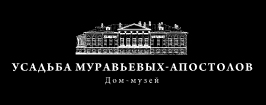About the fund «Architectural Heritage - Russian Manor Endowment Fund» From Kseniya Ferz

Igor Nikolsky
Nikolsky Igor Yuryevich —Doctor of Business Administration, honorary member of the British Business Academy, certified top manager according to the EU-NQF of the European Economic Committee and National centre for managers certification, since 2015 - co-founder and general director of the «Architectural Heritage – Russian Manor Endowment Fund», is telling about the Fund’s initiatives and the significance of the manor architecture restoration in Russia.
How did the idea to take charge of Sukhanovo Manor appear and why exactly this manor?
I.N. In the spring of 2013, prince Oleg Valentinovich Volkonsky invited me to visit the Sukhanovo manor and see the difficult situation around their family estate. The question was that once prosperous and popular among the artistic intelligentsia, the manor was then in a state of disrepair and oblivion.
The Sukhanovo manor has become the part of the Russian history alongside with the name of its last owners, the princes of Volkonsky, and is always associated with the memory of the Patriotic War of 1812 and the culture of Pushkin era. This is one of the most significant manors of Russian Romanticism. Until its golden age, the manor, which in the XVII century was owned by the tsar, changed many owners, among them Peter's tutor, boyar T.N. Streshnev (1644-1719), and the chief prosecutor of the Senate, I.I. Dmitriev-Mamonov (1680-1730), and his nephew writer F.I. Dmitriev-Mamonov (1727-1805). In 1761 Sukhanovo was bought by the brigadier A. G. Guriev, the father of the future Minister of Finance, who was engaged into the secret political history of Russia. In 1763 Guryev built the stone church of the Nativity of the Virgin in Sukhanovo, being the oldest construction of the manor, which was preserved until 1935.
In the first post-revolutionary years, Sukhanovo met with plundering and suffered serious damages. The old church, built by Guryev and adjoining the house was destroyed, as well as almost all the park buildings and memorial monuments. In 1935, in Sukhanovo the health resort of the Union of Architects of the USSR was located. According to the projects of V.D. Kokorin and N.D.Vinogradov, the main house and mausoleum were reconstructed and changed according to their new functions. Now the manor is still run by the Union of Architects of Russia. At the same time, its state after numerous property disputes, attempts of raider seizures and plundering in the 90s is far from prosperous. Almost all of its valuable monuments require restoration, and some of them - full restoration, as well as the once magnificent manor park.




What factors make the restoration of the manor more complicated?
I.N. The reasons are obvious: the state authorities, the Ministry of Culture of the Russian Federation, the Federal Property Management Agency of the Russian Federation have stopped financing the architectural monument of federal importance; an uncertain situation appeared in concern with the operational management agreement between the Federal Property Agency of the Russian Federation and the Union of Architects of Russia; the raider captures of the estate and the lands belonging to it became more frequent.
On the part of the Union of Architects of Russia, in this situation, the most active steps were taken to preserve this unique architectural monument. Thanks to the honourable president of the Union of Architects of Russia, Yuri Petrovich Gnedovsky, under conditions of the manor legal status uncertainty and lack of financial support, all the attempts connected with the criminal capture of the manor and its complete plundering were disrupted in the literal sense. Unfortunately, the forces for preserving the lands around the manor were no longer sufficient, and the lands formerly belonged to the manor, were plundered and sold for cottage construction during the hard times of the 90s.
How many objects in Russia with the similar historical significance are in a state of disrepair?
I.N. In Russia today more than 7 thousand manors have been preserved. Many of them are true masterpieces that used to store rare libraries, collections of paintings and other artistic values. Many of them were built by the great architects of that time and due to their location form the part of the Russian national landscape.
On the eve of 1917, there were over 40 000 manors in the Russian Empire, the majority of which were situated in central Russia. For the country manors the most picturesque locations were selected; as a rule, they were built on a high hill and had to have ponds and spacious parks in close vicinity. These estate ensembles were designed and constructed by such prominent Russian and European architects as Kazakov, Stasov, Ukhtomsky, Lvov, Gilardi, Rastrelli, Cameron, and others.
The collections of the best Russian and European works of art, china ware, weaponry, sculptures, furniture, and books used to be stored in those manors. The manors also hosted the theatrical performances, balls, concerts, masquerades, as well as literary and musical evenings. In their manors, the owners conducted the scientific work in the field of physics, astronomy, chemistry, agriculture, bred unique racehorses (Orlovsky trotter and others), hunting dogs (Russian wolfhound borzoi and others), studied the family archives and genealogy, history, culture, and folklore. On the territories of their estates, they organized temples, hospitals, alms-houses, and schools for the residents of the surrounding villages. Extensive and diverse agricultural activities were also conducted on the territories of the country manors.
A coup d`etat of 1917 has caused a fundamental damage to the Russian traditions, culture, and history and ruined the notion of the “family nest” that resulted in the “generational memory” loss. The majority of the Russian manors that survived almost a century-long ordeal entered the XXI century ruined, abandoned, forgotten, and unwanted.
Which manors are being restored or have been restored successfully?
I.N. The house-manor of Muravyov-Apostol, the mansion of Senator I.M. Muravyov-Apostol in Moscow on Staraya Basmannaya str. can be viewed as an example of a unique restoration in modern Russia. It was built in the style of classicism in the late XVIII – 1st quarter of the XIX century. Open for visiting as a house museum.
Three-storey house is based on a wooden frame on a brick plinth; a grand suite of rooms is arranged in its second floor, consisting of a cabinet, a grand bedroom, two living rooms, a ballroom, and a small half-rotunda. The street facade is decorated with a six-columned portico and antique friezes above the high windows of the second floor, the left side of the building is completed with a half-rotunda. The former Babushkin Lane (now Lukyanov Street) crosses Basmannaya Street, in which the factory of the merchant Babushkin was located; the main entrance to the house number 23 is also from the lane. The building looks quite commensurate, creating the image of a simple but elegant city mansion and giving the opportunity to imagine Basmannaya Street two hundred years ago, when the church of Nikita the Martyr (Vladimir Icon of the Mother of God) was overlooking the district, and the neighbouring mansions of the Kurakins, Demidovs, Razumovskys were not yet rebuilt.
In 1991, at the invitation of the Soviet Cultural Foundation, the family of Muravyov-Apostol: Alexei, Andrei and his son Christopher visited Russia They returned some family relics and decided to restore the family mansion. A non-profit organization was set up under the leadership of Christopher, who became the founder of the House Museum of Matvey Muravyov-Apostol.
After several years spent on various formalities, in December 2000 the main house of the estate of the Muravyov-Apostols was transferred by the Moscow Government's decree to the museum on lease for 49 years, the restoration began. Restoration was carried out with the preservation of the old wooden frame of the building, during restoration open wooden fragments were left in the walls. In the courtyard of the building cultural layer of land in a meter and a half was removed, the artefacts found during excavation were transferred to the museum, which was opened for visits in 2013.
Exhibitions and entertainments are held in the manor. In particular, Christie's auction house celebrated its 15th anniversary in Russia here.




Does the government subsidize these projects?
I.N. In recent years, the state has taken measures to create conditions for attracting extra budgetary funds aimed at the revival of destroyed cultural heritage objects, as well as facilitating the transfer of objects to private ownership on mutually beneficial basis. On the part of a number of legal entities and individual persons there is an interest in investing in the restoration of cultural heritage objects, adapting them for various purposes, both private and business: private/corporate residences, hotels, restaurant complexes, countryside boarding schools, boarding houses for the elderly and etc.
That is, in fact, all the hope for enthusiasts? Who was the initiator of the Russian Manor Fund and who has already supported the project with money transfusion?
I.N. The experience of European countries in the preservation, restoration and use of architectural heritage shows that this task can be most effectively solved only by joint efforts of the state, private investors and society. At the present time it can be said that all our hope is only for enthusiasts.
Returning to the creation of the Endowment Fund, it is difficult to imagine that in this situation of legal uncertainty and with the volume of restoration work to be performed, it would be possible to help by inviting investors to directly put their money in the Sukhanovo manor. Any conversation on this topic, both from foreign and Russian investors, ended on the questions of who owns the manor and what dividends we receive from these investments.
In this regard, I proposed the establishment of the Endowment Fund, as the most transparent and understandable for foreign and Russian philanthropists, so that to unite all the parties interested in the revival and preservation of the cultural and historical heritage of the Russian manor in general and Sukhanovo manor, in particular. Prince Volkonsky Oleg Valentinovich gave his consent to this. Next, it was necessary to convince the leadership of the Russian Union of Architects in the correctness of the idea related to the Endowment Fund creation. In January 2014, at the meeting of the Board of the Russian Union of Architects in the presence of the President of the Union of Architects of Russia, Mr. Bokov Andrey Vladimirovich and the respected members of the Board of the Union of Architects, I presented the concept of creation and the entire mechanism of the Endowment Fund «Architectural Heritage - Russian Manor» in details. The project of a guest house with 3 floors and with an area of 309.6 sq.m. on the territory of the Sukhanovo manor, having a budget of 20,000,000 rubles was one of the first to be completed. Financially, we were supported by one of the largest aluminium holdings in Russia.
What is the key peculiarity of the financial policy conducted by the fund?
I.N. The main innovation of the organizational system of the «Architectural Heritage - Russian Manor Endowment Fund» is that this organization is one of the few in Russia adherents of the so-called European type of funds.
The Fund works exclusively with the endowment. Its targeting is formed by the philanthropists and patrons themselves. For example, if the benefactor expresses the wish to give money to restore the arbour rotundas in the Sukhanovo manor it means that the money cannot be spent for any landscaping works or house repair. Only for the arbours.
According to the law, the incoming benefactors’ funds should be transferred to the Fund’s management company JSC “Sberbank” within two months and permanently be at the management company’s disposal. For its projects, the Fund has the right to use only the money earned by the management company from the endowment. Thus, the Fund creates long-term financing of its projects and own financial independence. The lifetime of the Fund is indefinite.
The Endowment Fund does not carry out any paid work and cannot make remuneration payments to the members of the Board of Trustees and the Assembly for the performance of their assigned functions. The Endowment Fund has no purpose of making profit and does not distribute profits among the founders. The Fund creates endowment for the benefit of non-profit projects in the fields of culture, arts, education, science, sports, and archives. The founders may not use the Fund’s assets for their own purposes. The legal form of the Endowment Fund does not provide any shares for the founders. The property owner is the Fund; no single founder of the Fund has any ownership for the property owned by the Fund.
All projects receive preliminary approval by the Board of Trustees of the Fund. This excludes the possibility of misuse of funds and the corruptibility of the Endowment Fund.
With each benefactor and philanthropist, the Foundation signs a donation agreement in an approved form. After the beginning of its activities, the Fund undertakes to provide the public, philanthropists and patrons of arts with detailed reports on the fulfilment of the restoration project and the targeted use of donations. This is also followed by the Ministry of Justice of the Russian Federation and the Inspector of the Endowment Fund.
Which objectives are the priorities of the Fund now?
I.N. The Endowment Fund "Architectural Heritage - Russian Manor" started its activity with the financing of restoration works of federal significance monument, Sukhanovo manor of Princes Volkonsky, XVIII-XIX centuries (today Creative House of Architects of Russia) and the monument of federal significance of the city estate of Talyzins on Vozdvizhenka, XVII-XIX centuries (today the Museum of Architecture named after A.Shchusev).
And the priority projects of restoration in the Sukhanovo estate today are:
- Stella to the Emperor Alexander I.
The cast-iron obelisk about seven meters high, crowned with a two-headed eagle and decorated with yellow wreaths, torches and garlands. On four sides of the obelisk, under the dates of the military glory of the Savior of Europe - 1812, 1813, 1814, 1815 there is the relief inscription: To Emperor Alexander, born on December 12, 1777, Reigned 24 years 8 months and 7 days, Died on November 9, 1826. On the pedestal there is inscription: cast in the factories of Shepelevs and W. Clark. Constructed by Prince Petr Volkonsky in 1826. The budget of the project for the reconstruction of the obelisk from cast-iron in accordance with the drawings, photographs and pictures is 7,500,000 rubles.
- Complex of Princes Volkonskys' temple-mausoleum constructions.
The temple was built in 1813-1814 as a family burial vault of the princes Volkonsky according to the project of the architect D. Gilardi and was a genuine masterpiece of Russian architecture of the Empire era. In 1934 the temple complex was partially destroyed, partially rebuilt according to the project of the architect N.D.Vinogradov for the needs of the Creative House of Soviet architects. The dining room is still in operation in the reconstructed buildings of the complex. Currently, in the Dimitry Rostovsky church, which is in the burial vault of the princes Volkonsky, sacred services are renewed. The temple-mausoleum building, which has lost its original appearance, is in an unsatisfactory state. The roof is leaking, the stucco decoration of the facades is lost, the facade walls that did not have plaster, are plastered, the facades are distorted by the outbuildings; the decor of the interiors is lost. In general, the complex also lost semi-circular colonnades, which limited the memorial space of the inner courtyard and the bell tower. The budget of the project for the restoration of the monument in its original form is 140,000,000 rubles.
- Installation of the grave of prince Dmitry Volkonsky.
Excavations and geophysics without genetic expertise. Restoration of the gravestone monument from the solid mass of granite slabs with a cross of white marble on the top. The project budget is 2 000 000 rubles.
- Complex of stables and coach yard.
From the economic complex, which included stables, human, rick-yard, storerooms, ovine, grain barns, at present only the old stable with a carriage shed (the second half of the 18th century) is left, in a state of emergency. The oldest building in the Sukhanovo manor - a stable - is of exceptional interest as the only building of the Baroque era that was preserved in the Moscow region.
The construction consisted of two buildings separated by passage, the northern one of which served as a coach-house, the southern one as the stables. The residential building adjoined to the last one from the southeast, which has only one section remained. Until recently, part of the stables continues to be used according to the original historical purpose of horses keeping. The project budget for the restoration of a complex of stables and a coach yard is 90,000,000 rubles.
What are the tendencies in the preservation of historical real estate in Europe, effective strategies?
I.N. Terms of ownership and protection of monuments vary from country to country. Abroad, there are no analogues to Russian Legislation, according to which all cultural monuments would be in state ownership. The tradition of private property has not been interrupted, and many castles are in private hands for more than one century. Historical houses in France, which are under protection, make up about a third of the total number of castles and manors. Owners of protected and unprotected buildings belong to different communities.
Monuments protected by the state are divided into two categories. The status of a public monument (monument classe), is similar to the Russian monument of federal significance and entails significant restrictions. On the other hand, the owner can rely on state subsidies and tax incentives. Public monuments are under the patronage of the Ministry of Culture of France and are inspected at least once a year in order to monitor the scheduled repair work. The repair is carried out under the supervision of architects from security agencies and is funded by state grants by 50%.
The status of a registered monument (monument inscrit) implies a smaller number of restrictions; it is dealt with by regional authorities. In the Russian version it is a monument of regional importance. The owner of the registered monument is entitled to 10-40% compensation for the cost of essential repairs of the monument and for technical advice. If compensation is received, the work at the registered monument is controlled by the state. The main tax benefits for protected monuments of both categories relate to income taxes. So, the following is deducted from the owner's total income:
- The sums spent for repair work, not paid by the grant.
- If the building is not open for public access, half of the costs for building maintenance (roofs, systems), modernization, interest on loans for building services, local taxes.
- If the building is open for public access (50 days a year or 40 days from July to September) then 100% of the above costs for three quarters of the building. The rest of the house is treated as a closed part belonging to the owners. The costs for it are compensated by 50%
Public access is encouraged even for monuments that are not state protected. In this case, work in the zone with public access is compensated by 100%. Works in the private zone are paid for 25%. In all cases, revenues from the sale of tickets that do not exceed a certain amount are not taxed.
The third category of monuments in France is the so-called recognized monuments (monuments agrees), not protected by the state. These include the most modest representatives of the architectural heritage, as a rule, works of folk architecture. This concept emerged in the 1960s through the activities of the public association "Old Houses of France" (Vieilles maisons francaises), and together with the law of July 2, 1996 which established the National Heritage Foundation (Foundation de patrimoine) serves the purpose of preserving and enhancing the importance of the state-protected rural heritage, which is about 500,000 facilities throughout the country. Being connected with state structures and other participants of the process, it helps public and corporate owners of monuments to finance projects related to conservation, and private owners to receive tax benefits and seek patrons of arts, the concept entered the legal environment. The status of a recognized monument is assigned by the local tax department in coordination with the monument protection authority and the tourism service and provides access to a system of tax benefits similar to that applied to protected monuments. After 5 years for renewal of benefits and in order to control the state of the facility, applications are re-submitted. The basis for assigning the status of a recognized monument is its opening for visiting, and the amount of benefits depends on the working time. The establishment of a free visit brings to the owners a 50% tax relief on their aggregate income. Paying for a visit to a building not occupied by the owners provides a 75% tax return on the proceeds from the sale of entrance tickets. If a paid visit is conducted in a building occupied by the owners, then in addition to a benefit similar to the previous case, there is still a reduction in the tax on the owners' total income by 12.5%.
Violation of legislation on the protection of cultural monuments can lead to criminal sanctions. In accordance with the Code of National Treasure of France, the owner who destroyed or damaged a valuable object is sentenced to three months in prison or a penalty of 3750 Euros. The same amount will have to be fined by the owner if he hides his intentions from the state related to making any changes in the construction of the object, and also assigns the rights to the monument to another person. If it is found that the protected monument is under threat of destruction, and the owner does not want or cannot make the effort to save it, then the object can be restored at the expense of the state with the subsequent recovery of the amount spent from the owner, or transferred to churches or museums, which themselves will be responsible for the preservation and restoration of the monument.
Could you please give examples of successfully implemented projects in Europe?
I.N. Magnificent castle Saint is a historical monument, with a French garden, buildings and a pond on the territory of 45.64 hectares in the department of Charente-Maritime.
Perfectly restored in 2012 with the preservation of the original elements of its era, the castle of the XVIII and XIX centuries is included in the register of historical objects. 30 main rooms, of which 10 are bedrooms. The church, large and beautiful halls, outbuildings, the tower of the XIV century, moats with water and magnificent French gardens with ponds create an exceptional ensemble. The estate is bordered by a river, 45.64 hectares of land with meadows, forests and ponds.

Source: http://www.loyalroyal.me/arhitekturnoe-nasledie-russkaya-usadba/








